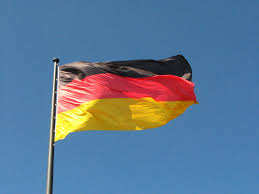German potholes threaten prospects in land of autobahn

By Bloomberg
For SMS Siemag AG, a pothole isn't just a pothole.
The maker of metal-processing plants, which ships products around the world, says damaged bridges makes getting them from its headquarters in Hilchenbach, Germany, to harbors such as Hamburg or Antwerp the hardest part. Transport of parts that weigh between 50 tons and 300 tons takes four times longer than it did in 2010 and has become five times more expensive.
The disrepair of German roads and bridges is at odds with a nation known for the autobahn and has become a symbol of an infrastructure neglect that may jeopardize the country's growth prospects. Calls for greater investment clash with Chancellor Angela Merkel's promise of a balanced budget, a pledge she's sticking to even as the economy stutters and the rest of the euro region finds scant resources for spending.
"If Germany continues on the economic path it's currently pursuing and doesn't boost investment, in only five years from now it could be in a much worse position internationally," Marcel Fratzscher, president of the DIW Institute for Economic Research in Berlin, said in a phone interview.
The trend already shows. At 1.5 percent, German growth will be less than half that of the U.S. next year and lag expansions in the U.K., Canada and Spain, according to forecasts by the International Monetary Fund.
State of Neglect
The Washington-based lender is pressing Germany to use low interest rates to foster investment. The yield on the country's 10-year bonds fell below 1 percent in August and stood at 0.88 percent at 11:50 a.m. Frankfurt time.
"Although Germany is not widely seen as a country with deficient public infrastructure, the reality is that this has been a neglected area for some time," the IMF said in July.
European Central Bank President Mario Draghi has pointed out that higher spending in Europe's largest economy wouldn't only improve long-term competitiveness, but also help to lift prices and revive growth in the 18-nation region.
Standard & Poor's calculates a stimulus package equal to 1 percent of German gross domestic product in both 2015 and 2016, about 55 billion euros ($70 billion) on the basis of 2013 output, would bolster euro-area growth by 0.3 percentage point. The ECB forecasts expansions of 1.6 percent next year and 1.9 percent in 2016.
Broken Bridges
Merkel has pledged to spend 5 billion euros on infrastructure during the four-year term she began in 2013, a fraction of what many say is needed. Some 13,000, or 20 percent, of the 67,000 bridges owned by local authorities in Germany are in poor shape and need repair or complete replacement, the government-financed German Institute of Urban Affairs said in a report published in September 2013. Fixing them will cost at least 17 billion euros, the Berlin-based institute said.
Even if Germany were to boost short-term growth, investment done in haste risks being misguided, said Clemens Fuest, president of the ZEW Center for European Economic Research in Mannheim. "If you want to invest more, investment takes time; if you start spending a lot of money very quickly, you get bad results, you get inefficiency."
German capital investment as a percentage of GDP has been on a downward trend since the 1960s and undershot the euro-area average since 2001. The country has had negative net public investment since 2003 -- that means the money spent by the government hasn't been sufficient to replace what was lost to wear and tear.
Investment Gap
The DIW says Germany's investment gap has averaged 2.9 percent of GDP between 1999 and 2012. That translates into a shortfall of about 80 billion euros per year.
Fratzscher has urged investing a minimum of 15 billion euros and called the government's pursuit of a balanced budget a "fatal signal" for German companies and neighboring economies.
Such demands have found few sympathetic ears among policy makers in Berlin and Frankfurt.
While Merkel has signaled openness to giving France and Italy more time to meet deficit targets in exchange for measures making their economies more competitive, she hasn't shown any intent to give up on Germany's balanced budget goal. Finance Minister Wolfgang Schaeuble said government spending should switch its priorities from consumption to investment, a line echoed by Bundesbank President Jens Weidmann.
"The cost of lagging infrastructure investment is a deterioration of potential growth," said Johannes Gareis, an economist at Natixis SA in Frankfurt. "This isn't just about the capital stock but also about technological progress."
Education Spending
According to the Organization for Economic Cooperation and Development, Germany's spending on education as a percentage of GDP is below the average of its peers.
Germany must "urgently" invest in higher education, according to Horst Hippler, president of an association of German universities, who says an estimated 35 billion euros is needed just on facilities. The Association of German Chambers of Commerce and Industry has warned that low spending on education puts the country's competitiveness at risk.
For SMS Siemag, maker of metal-processing plants, relief is on the way after local and national authorities promised to fix the crumbling motorway bridges around its plant. Hardly surprising, it won't arrive quickly.
"The investment lack in our infrastructure is very big and traffic is growing more and more," said Thomas Isajiw, head of corporate communications of SMS Group, Siemag's parent company. "The improvements won't be fulfilled until 2025."
Here we are to serve you with news right now. It does not cost much, but worth your attention.
Choose to support open, independent, quality journalism and subscribe on a monthly basis.
By subscribing to our online newspaper, you can have full digital access to all news, analysis, and much more.
You can also follow AzerNEWS on Twitter @AzerNewsAz or Facebook @AzerNewsNewspaper
Thank you!
